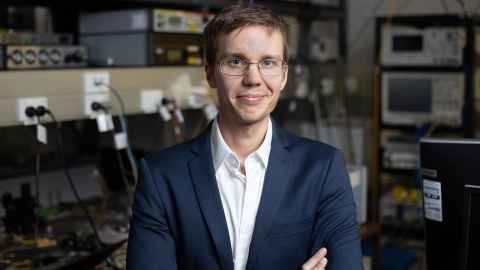Supercharged internet beckons as experiment crams in more data
23 September 2022
How much faster could the internet get? Quite a bit.

Scientists in Auckland and France successfully demonstrated an experimental technique that could supercharge the internet by substantially increasing the speed of data transmission through optical fibre.
The researchers reduced the gaps between the laser pulses which carry information, allowing data to be compressed, says Associate Professor Miro Erkintalo, of Waipapa Taumata Rau, University of Auckland.
Tested in a lab in France and reported in the journal Nature Photonics, the technique, involving “arbitrary optical pulse sequences,” was theoretically proposed by Russian scientist Andrey Starodumov in 1996 but never previously achieved in the laboratory.
To transfer 1 gigabit of information per second, the data needs to be encoded on a sequence of laser pulses that are separated by 1 nanosecond (a thousand-millionth of a second).
“Existing systems can readily cope with such data rates,” says Erkintalo, of the Department of Physics in the Faculty of Science. “But the demand for faster information transfer is constantly growing, so how do you up-scale this, for example, how do you transfer 1,000 gigabits of information per second? Our demonstration provides one route.”
The researchers started with a gap of a fraction of a millionth of a second between bits. That was cut to 22 trillionths of a second.
“Our experiment shows a potential method for securing extremely large gains,” says Erkintalo.
How soon might the technique be practically applied? “Our experiment represents a proof-of-concept demonstration,” says Erkintalo. “Where to from here remains to be seen, estimating time frames is always challenging in research.”
Scientists on the project were affiliated with CNRS Université Bourgogne Franche-Comté in France, the University of Auckland and the Dodd-Walls Centre for Photonic and Quantum Technologies, a national centre of research excellence.
The paper is entitled Extreme waveform compression with a nonlinear temporal focusing mirror.
Media contact
Paul Panckhurst | media adviser
M: 022 032 8475
E: paul.panckhurst@auckland.ac.nz